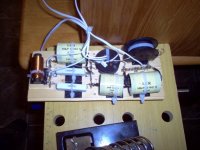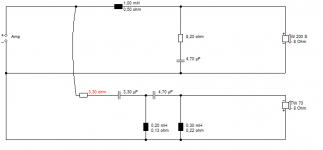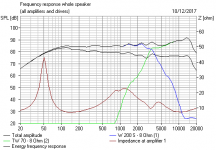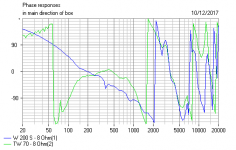I am not sure what you mean by "consistent". There isn't an absolute here as I said before. It's a continuum from absolute studio to absolute field and everything in between.About field vs studio recordings - neither group is consistent!
David Griesinger is the expert in sound and sound reproduction acoustic analysis, well worth studying his writings! http://www.davidgriesinger.com/
Here is an article by him about early reflections
David is indeed well worth studying, but again, all his research is in live situations and live recordings, mostly auditoriums. He does have a bias for large orchestras. That said, everyone should read his work.
If the rapid drop off is due to the acoustic short circuit of the OB it might be wise to move the xover point up a bit and/or steepen the high pass.
Those things are not cheap and better safe than sorry unless you trust yourself not to get carried away with the vol control or if it sounds (or measures) worse.
Yes, this is similar to what I'm thinking, very simple to try now, oh the luxury! The Eikonas are pretty tough with a large Xmax
Let's try and get back on track with this whole dispersion and filter slope thing:
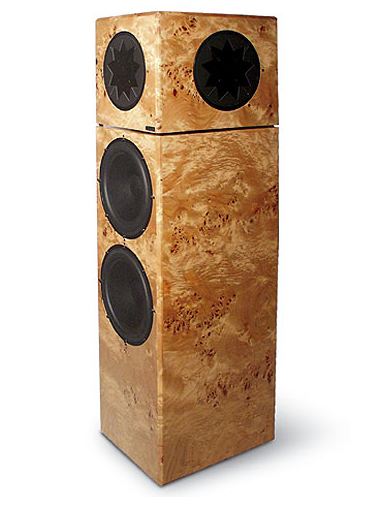
This is an extremely narrow-dispersion Manger design. By Joachim Gerhard.
IMO, it ends up sounding like headphones:
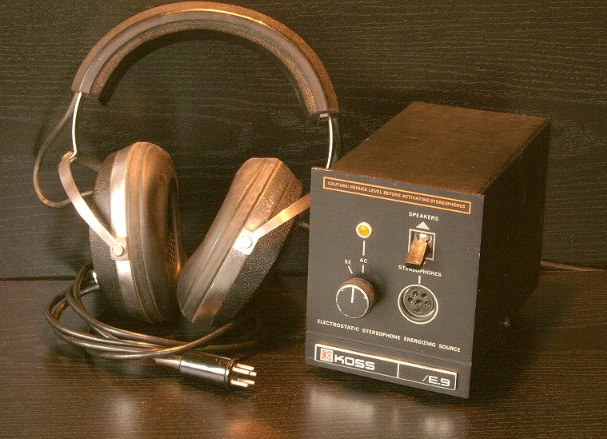
Where this thing sounds spooky is with close-microphoned recordings. There is no room acoustic at all. There is no studio acoustic either. We'll leave the Mercury "Living Presence" 2 or 3 microphone recordings (with hall acoustic) for another thread. 😎
This is an extremely narrow-dispersion Manger design. By Joachim Gerhard.
IMO, it ends up sounding like headphones:
Where this thing sounds spooky is with close-microphoned recordings. There is no room acoustic at all. There is no studio acoustic either. We'll leave the Mercury "Living Presence" 2 or 3 microphone recordings (with hall acoustic) for another thread. 😎
Last edited:
Assuming your drivers extend flat an octave or so past the crossover point I see no obvious reason that anything would have advantages over LR4 but why not try a few?
Other crossover slopes and types can improve system frequency response off axis (horizontal), for example, at the axis of the first wall reflection. Drivers always in phase on axis don't provide the flexibility to try and tune this
I've had some good luck in the usual ~ 2kHz xover with fc staggered 3rd order xovers (acoustic), with gentle knee transition
Old school sims/design always seemed to compare "power response" to on axis and trade offs back and forth. After many many years tuning and measuring in real rooms, I always focus more on first boundary reflection response vs on axis. I find first boundary reflection has more audible effect on timbre than power response (unless power response is wacky out of line). I also lay on the ground and listen sometimes and care about the response in that direction. Don't care if the lobe is perfectly symmetrical. Also care about response while standing, which i do often. Again, care far less if lobe is symmetrical. Many years of tuning/measuring/sim over multiple designs led me to this.
Last edited:
Also care about response while standing, which i do often. Again, care far less if lobe is symmetrical. Many years of tuning/measuring/sim over multiple designs led me to this.
I find the sound improves substantially when I stand, both imagery and depth, I usually listen off-axis 15 degrees in the horizontal whilst sitting I'm wondering if I should be listening off axis in the vertical to?
Thanks Dave, I might just try that 😉Listen. Choose what sound best.
Other crossover slopes and types can improve system frequency response off axis (horizontal), for example, at the axis of the first wall reflection. Drivers always in phase on axis don't provide the flexibility to try and tune this
I've had some good luck in the usual ~ 2kHz xover with fc staggered 3rd order xovers (acoustic), with gentle knee transition
Old school sims/design always seemed to compare "power response" to on axis and trade offs back and forth. After many many years tuning and measuring in real rooms, I always focus more on first boundary reflection response vs on axis. I find first boundary reflection has more audible effect on timbre than power response (unless power response is wacky out of line). I also lay on the ground and listen sometimes and care about the response in that direction. Don't care if the lobe is perfectly symmetrical. Also care about response while standing, which i do often. Again, care far less if lobe is symmetrical. Many years of tuning/measuring/sim over multiple designs led me to this.
^this
very reasonable approach
I find the sound improves substantially when I stand, both imagery and depth, I usually listen off-axis 15 degrees in the horizontal whilst sitting I'm wondering if I should be listening off axis in the vertical to?
That could be caused by a number of things. Off axis vertically spreads out the diffraction signature:instead of offsetting the tweeter, you're offsetting your head. A sloped baffle and listening at the the listening axis achieves similar.
Have you tried measuring at the standing position? maybe you just prefer the response there. You'll also have less high frequency output from larger drivers off axis and maybe what you hear is less cone creak up junk off axis from large drivers?
If done right on axis, I can't think of a reason standing should necessarily sound better. Standing, your head ~ 30" from ceiling. Sitting, ~ 36" from floor. Unless you have a very high or gabled ceiling? If you do, maybe you're just putting the floor notch further lower into the schroeder range where other room modes might be filling it in.
Last edited:
Listen. Choose what sound best.
dave
Then when you get tired of running around in circles because you can't decide what sounds best, you might want to take some measurements.
So, the measurements will tell me what sounds best? Haha, I take your point 😉 A reference is handy for sure, like a map so you don't get hopelessly lost. Sometimes when I go out for a ramble I take a map, sometimes I don't. I wander. I go places I wouldn't otherwise have gone, then, when I find my way home I get the map out.........
I hate wasting time setting up my audio system, so that I can just listen and not tinker. I try not to just wander about, I want to get to the best result and get it done so that the fun part, the listening, can proceed. I don't tweak - that never got me anywhere.
Yes. All the anality about cables. Even if they do make a difference (don`t want to argue the point, I actually think they can have a subtle effect in some circumstances), its minuscule compared to relatively small changes in crossover components, toe in or speaker-listener position. Tweaks are for lads that don`t know how to do the rest of the important stuff. Absolute Sound sewered this hobby down a bad path for too long (JGH died resenting it). Soapbox mode off.
TBH, gedlee, most of us who actually build stuff know that everything is a trade-off.
IMO, there are two sorts of loudspeaker. The narrow dispersion type that is more like headphone listening in any room:.....
Think many of your various own build examples and predictions looks like response replica taken from datasheets, therefor hope its okay ask if you measure any real situation acoustics or base responses and conclusions upon predicted simulation for stuff as slopes/baffle step/diffraction/XO power responses/room.
Extremely complicated post here, BYRTT. Do try and keep up. 😀
I think the first thing is to have a good idea. This is a much loved design by Henry Kloss, one of the audio greats:
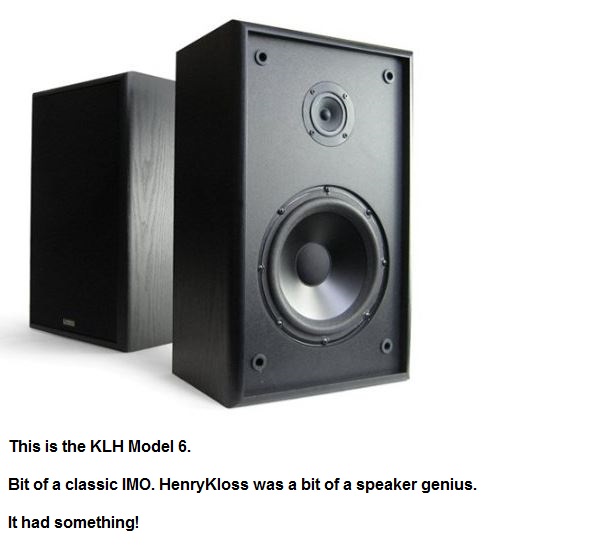
How hard can it be to do this sort of thing?
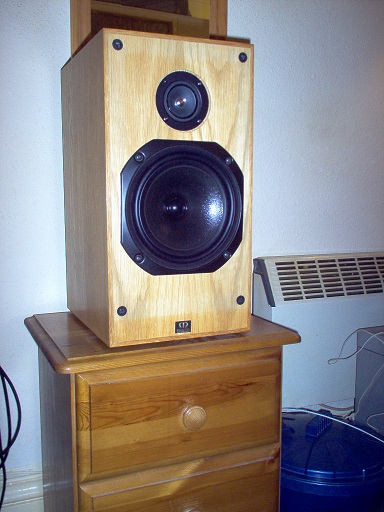
I just took a good and successful idea and applied my filter knowledge. Shallow filters are lively enough, but they distort. So, unlike Henry, I used a fourth order tweeter filter here with not too much bass boost. There is a fantastic trick applicable to 8" bass which solves a lot of problems. Flip the polarity.
TBH, this was my best effort with the narrow-dispersion Monacor HT-22/8 tweeter, which has a flatter response than the Visaton TW-70 which I used for modelling purposes. Very clean sound at the top with a serious filter. Very LR4. Well-behaved 8" woofers are much of a muchness IMO.
Trust me on this, 4th order sounds very lively and detailed. I regard minor level adjustments as easy enough. Just trust your ears.
I think the first thing is to have a good idea. This is a much loved design by Henry Kloss, one of the audio greats:
How hard can it be to do this sort of thing?
I just took a good and successful idea and applied my filter knowledge. Shallow filters are lively enough, but they distort. So, unlike Henry, I used a fourth order tweeter filter here with not too much bass boost. There is a fantastic trick applicable to 8" bass which solves a lot of problems. Flip the polarity.
TBH, this was my best effort with the narrow-dispersion Monacor HT-22/8 tweeter, which has a flatter response than the Visaton TW-70 which I used for modelling purposes. Very clean sound at the top with a serious filter. Very LR4. Well-behaved 8" woofers are much of a muchness IMO.
Trust me on this, 4th order sounds very lively and detailed. I regard minor level adjustments as easy enough. Just trust your ears.
Attachments
Last edited:
I've been experimenting, I think it was the simple matter that I was moving closer when I stood, increasing the angle. I now have them 7' apart and 6' away. BTW they are OB widebandsThat could be caused by a number of things.
Extremely complicated post here, BYRTT. Do try and keep up. 😀
I guess you proved BYRTT's point, more data sheet crossovers...
Tinkering and tweaking are two of my favourite wastes of time, still, each to their ownI hate wasting time setting up my audio system, so that I can just listen and not tinker. I try not to just wander about, I want to get to the best result and get it done so that the fun part, the listening, can proceed. I don't tweak - that never got me anywhere.
Yes, fair enough but some things prove not to be able to be tweaked out and the solution can end up being obscure..Tinkering and tweaking are two of my favourite wastes of time, still, each to their own
After some recent experiences I'm beginning to wonder if a good part of "You are there" vs "They are here" is as simple as specific differences in the frequency response, particularly in the presence region...I'm not sure the 'I am there vs They are here' dichotomy actually exists, at least not for me.
We know that a large part of our ability to localise sound comes from the subtle HRTF induced changes in frequency response.
This means that frequency response aberrations of the speaker that happen to coincide closely with actual valid HRTF localisations can have a strong influence on where the sound is perceived to emanate in relation to the actual speakers.
For example an emphasis at 10Khz can shift the apparent source location of the image vertically upwards so that it floats in the air considerably above the speakers actual location, because an actual sound source at that higher position would have an HRTF that emphasises those frequencies. This is an effect I've observed many times.
Another example is that an emphasis at 1Khz can cause confusion about whether a sound is directly in front of you or behind you, as an emphasis at that frequency corresponds to a sound directly behind you in a HRTF. Conversely a deliberate dip around 1Khz can more strongly (artificially) focus the source of a sound to the front. (Funnily enough, many drivers have a surround dip in their response at about 1Khz...)
Recently I've been rebuilding and actually finishing some perpetually never finished speakers whose drivers I've been using in various configurations for years, previously the tweeter was sitting on the top separately so I could adjust the acoustic offset, and they were using a fairly basic 3rd order crossover.
These speakers have had outstanding "They are here" imaging performance in past configurations where the image literally hovers in front of the speakers, so I know the drivers are capable of it. In the new configuration the tweeters are now flush mounted on the baffle and as a result the acoustic centre of the tweeter is significantly in front of the other driver, by approx 35mm.
Predictably the performance through the crossover region is poor now with the old simplistic crossover resulting in a significant response depression from about 3-5Khz and poor phase tracking through the crossover.
I've been designing a new crossover from the ground up for the new driver positioning which will resolve this and other issues and I'm currently waiting for parts to arrive so I can build it, meanwhile I've been making do with the old crossover with a bit of EQ, which has been quite informative.
In particular I notice that the "They are here" imaging of recordings I'm familiar with is largely absent, even with a bit of EQ to boost the presence region. So it's pretty clear that the "They are here" illusion is critically dependent on the response through presence region from about 3-5Khz.
It doesn't sound terrible in fact it sounds quite pleasant, clean and laid back on most recordings but just doesn't have that presence and image floating in the air quality that I miss and used to get, and you can definitely tell the drivers aren't integrating well.
On the other hand I have many other recordings which have a strong sense of "You are there" imaging in them (some acoustic, but many with "artificial" studio generated soundscapes) and they sound just fine despite the problems in the presence region.
It sounds like the source of the sound field is beyond the wall behind the speakers, and doesn't appear to originate from the speakers or within the room at all. There is a strong sense of being in a large environment with the sources of sound being quite some distance from you.
From prior experimentation I know that this sense of space and the sound coming from behind the speakers wall is partly due to ambience in the recording, but a good part of that perception of depth comes from lower frequencies in the 150-400 Hz range, approximately.
Holes or lack of response in that region can destroy the illusion of depth in the recording while a speaker that reproduces that region well, (and that includes dealing with problems like floor bounce cancellations) can produce a convincing sense of depth on these kind of recordings.
Both the 3-5Khz and 150-400Hz regions have their own challenges in speaker design, 3-5Khz is often at or near a crossover frequency so good driver integration (including good phase tracking) and crossover design plays a major part in whether the speaker can do "they are here" imaging well or not.
But 150-400Hz is also quite challenging, especially for 2 ways where floor bounce cancellation and room vertical mode cancellation can be major issues that put holes in that region, especially around 150Hz.
A well designed 3 way system with a low mounted woofer and carefully chosen crossover frequency can do better here, and a wide baffle system will usually handle this region a lot better than a small baffle mini monitor style design as well. Getting the baffle step compensation wrong can easily ruin that depth illusion by bringing this lower midrange region out of balance.
What my long rambling post is suggesting is that "They are here" and "You are there" are two different possible illusions in a recording, and that they are both largely frequency response related but in different parts of the spectrum - one at low frequencies and the other at high frequencies.
And it is certainly possible to design a speaker that excels at one of them but doesn't do so well with the other and vica versa.
For example a small 2 way mini-monitor design with small baffle, very closely spaced drivers, carefully optimised crossover with good phase tracking etc, or a small full range driver, may excel at the "they are here" image floating in front of the speakers, but perform poorly in the depth illusion due to the small baffle and high midbass driver location causing large response holes and aberrations in the 150-400Hz range, primarily from room boundary effects.
Conversely an old fashioned wide baffle 3 way system with a floor mounted woofer could (assuming the crossover is competent) perform very well in the depth illusion and sound good on "you are there" recordings, but lack in the pinpoint imaging stakes on "they are here" recordings. I've certainly heard speakers like these before.
Is it possible to design a speaker that does both well ? I think it is yes, but I don't think it's common. The modern trend is to tall slender speakers and I don't think those will ever perform optimally in the 150Hz-400Hz region due to the baffle being too narrow, and not many 3 ways these days will deliberately place the woofer close to the floor and far from the midrange driver - but I think this is necessary to get this 150-400Hz frequency range right and therefore get the optimal reproduction of depth illusions.
Last edited:
- Status
- Not open for further replies.
- Home
- Loudspeakers
- Multi-Way
- Well I suppose the shallow vs. steep argument will just go on and on
